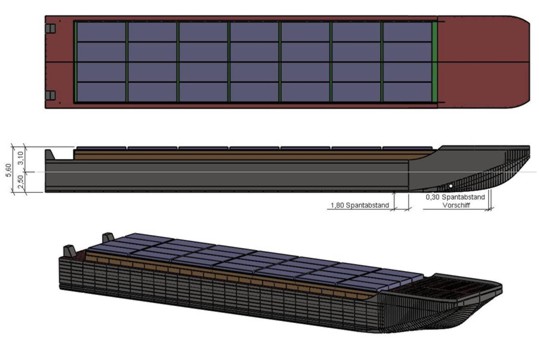Project Dipl.-Ing. Jens Ley
Accessibility of Wilhelmshaven by inland vessels - BiWi
BiWi loads: Calculation of the seaworthiness and structural strength of a seagoing inland vessel
The seaport of Wilhelmshaven is the only deep-water harbour in Germany and it is located in direct vicinity of the North Sea. Due to its location, the port is ideal for the handling of ships of the new generation and therefore has good future prospects. In the past, coal and oil were trans-shipped at the port.
Since the construction and completion of the Jade-Weser-Port in September 2012, port facilities with a capacity of 2.7 million TEU per year have been available for containers as well. Further extensions are being planned. Currently, the hinterland accessibility is limited to trains (60%) or trucks (40%) as there is no direct access by river for inland vessels.
In order to avoid a traffic collapse on the roads in case of increasing trans-shipments, the complete port has to be re-structured, covering all three modes of transport. The ship as a transport mode is essential for transports to the hinterland. As a consequence, there is a need for a completely new ship design which is seaworthy and at the same time can be used efficiently on the inland waterways. The route concerned leads to the Weser estuary, via a short maritime area.

Picture 1: Maritime area
For safety reasons, the ship design is based on the pusher barge principle. At sea, existing pushing vessels are used to transport a seaworthy pusher barge. In inland navigation, a canal pushing vessel is used and, ideally, pushes several barges at the same time.

Picture 2: Principle of seagoing pusher barges
The aims of the sub-project are as follows:
- Development of a method based on potential theory to assess the multi-body dynamics of the convoy at sea in transient flow simulations
- Determination of the maximum loads on the hull and on the structure at the coupling point
- Direct global and local structural analyses of the hull and the coupling point by means of the Finite-Element Method
- Development of a method to determine the damage stability of individual pusher barges
- Investigation of the required closing condition
The project is sponsored by the Federal Ministry of Economics and Technology (BMWi).

